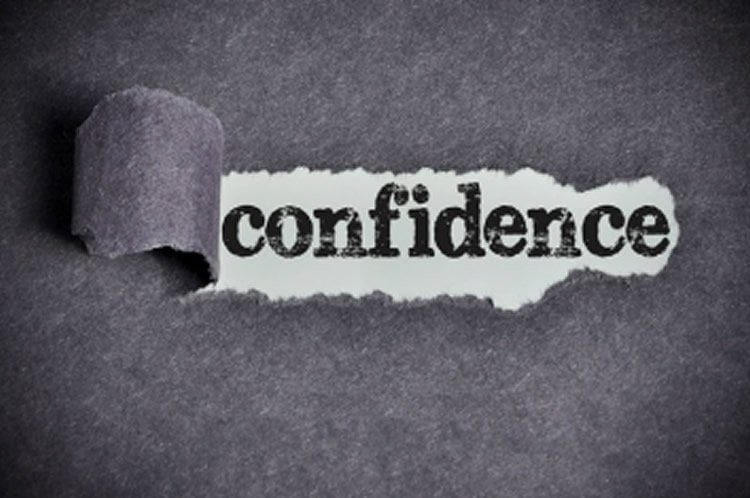Summary: A new study provides insights into the hierarchical nature of how we make choices over extended periods of time, ranging from medical diagnoses and treatment to the strategies we use to invest our money.
Source: NYU.
The confidence in our decision-making serves to both gauge errors and to revise our approach, New York University neuroscientists have found. Their study offers insights into the hierarchical nature of how we make choices over extended periods of time, ranging from medical diagnoses and treatment to the strategies we use to invest our money.
“What is challenging about comprehending why we make certain choices over long periods is to determine the true causes of the outcomes of our decisions,” explains Braden Purcell, an NYU post-doctoral fellow and the lead author the study, which appears in the journal Proceedings of the National Academy of Sciences. “When we make a mistake, it might mean we were simply unlucky or it could indicate a deeper flaw in our overall strategy. For instance, if a patient’s health gets worse, should the doctor just try another treatment or should she revise the original diagnosis altogether? Our findings map out a framework of how we make such evaluations.”
The key element in this process, the study shows, is confidence.
“Overall, we found that the brain uses confidence to gauge errors and revise decision strategy,” adds co-author Roozbeh Kiani, an assistant professor in NYU’s Center for Neural Science. “Specifically, the confidence in our initial assessments influences how we revisit them.”
In general, the aim of the research was to not only understand simple decisions about information immediately available to us, but also to capture decisions about the strategies that guide multiple decisions over time.
To do so, the researchers devised an experiment in which subjects judged the net motion direction of multiple dots on a computer screen; the subjects’ judgments were recorded by gauging their eye movement toward one of several targets on the screen. Notably, the correct target for a motion direction could change every few trials without any explicit cue—subjects had to infer these environment changes from error feedbacks. However, errors could arise from two sources: a mistake in perceiving the net motion of dots moving in multiple directions or a change in the correct targets.

Researchers discovered that subjects disambiguated the source of error using their confidence. When confident about motion direction, subjects attributed negative feedbacks to a change in the environment and quickly explored new targets that indicated such a change. When they were less confident, they counted negative feedbacks as partial evidence for an environment change but withheld exploring a new target until the sum of evidence—i.e., confidence on error trials—reached a threshold.
According to Purcell and Kiani, an optimal decision-maker should do exactly as participants in their experiment did: summing evidence to a threshold ensures that the environment change is detected as soon as possible. Further, optimal decision-makers should adjust the threshold for switching strategy based on the volatility of the environment—lower thresholds for environments that change more often. They tested this possibility and showed that subjects were quicker to explore new targets when changes in the environment happened more frequently.
Funding: The study was supported by a Simons Collaboration on the Global Brain post-doctoral fellowship, a National Institutes of Health grant (R01 MH109180-01), a Whitehall Foundation Research Grant, and a NARSAD Young Investigator Award.
Source: James Devitt – NYU
Image Source: This NeuroscienceNews.com image is adapted from the NYU press release.
Original Research: Abstract for “Hierarchical decision processes that operate over distinct timescales underlie choice and changes in strategy” by Braden A. Purcell and Roozbeh Kiani in PNAS. Published online July 18 2016 doi:10.1073/pnas.1524685113
[cbtabs][cbtab title=”MLA”]NYU. “In Gauging and Correcting Errors, Brain Plays Confidence Game.” NeuroscienceNews. NeuroscienceNews, 19 July 2016.
<https://neurosciencenews.com/confidence-neuroscience-error-4705/>.[/cbtab][cbtab title=”APA”]NYU. (2016, July 19). In Gauging and Correcting Errors, Brain Plays Confidence Game. NeuroscienceNew. Retrieved July 19, 2016 from https://neurosciencenews.com/confidence-neuroscience-error-4705/[/cbtab][cbtab title=”Chicago”]NYU. “In Gauging and Correcting Errors, Brain Plays Confidence Game.” https://neurosciencenews.com/confidence-neuroscience-error-4705/ (accessed July 19, 2016).[/cbtab][/cbtabs]
Abstract
Hierarchical decision processes that operate over distinct timescales underlie choice and changes in strategy
Decision-making in a natural environment depends on a hierarchy of interacting decision processes. A high-level strategy guides ongoing choices, and the outcomes of those choices determine whether or not the strategy should change. When the right decision strategy is uncertain, as in most natural settings, feedback becomes ambiguous because negative outcomes may be due to limited information or bad strategy. Disambiguating the cause of feedback requires active inference and is key to updating the strategy. We hypothesize that the expected accuracy of a choice plays a crucial rule in this inference, and setting the strategy depends on integration of outcome and expectations across choices. We test this hypothesis with a task in which subjects report the net direction of random dot kinematograms with varying difficulty while the correct stimulus−response association undergoes invisible and unpredictable switches every few trials. We show that subjects treat negative feedback as evidence for a switch but weigh it with their expected accuracy. Subjects accumulate switch evidence (in units of log-likelihood ratio) across trials and update their response strategy when accumulated evidence reaches a bound. A computational framework based on these principles quantitatively explains all aspects of the behavior, providing a plausible neural mechanism for the implementation of hierarchical multiscale decision processes. We suggest that a similar neural computation—bounded accumulation of evidence—underlies both the choice and switches in the strategy that govern the choice, and that expected accuracy of a choice represents a key link between the levels of the decision-making hierarchy.
“Hierarchical decision processes that operate over distinct timescales underlie choice and changes in strategy” by Braden A. Purcell and Roozbeh Kiani in PNAS. Published online July 18 2016 doi:10.1073/pnas.1524685113






